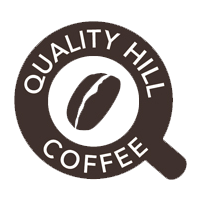There are many issues throughout the coffee growing regions in the world. Coffee prices are rising everyday and are expected to continue into the next year! The largest producer of coffee Brazil is not only having political problems but also crop issues. This will also cause coffee prices to increase. Since I do not import my own coffee us small roasters buy from importers, brokers. Since most coffee is a traded commodity prices can go up or down. I know the prices are rising every day and is expected to continue to rise. I have been tracking coffee that could be bought at a good price so I can offer a good price to home roasters. But there is an influx of large roasters buying up all the high quality lower priced coffee. So if you like the Cameroon coffee I have than buy it up before it is gone! Same with the Laos. Robusta coffee is a lower quality coffee used by the huge roasters to produce their really cheap coffee. I have taken most of my GREEN coffee beans off sale. I kept the Brazil lower. Happy Roasting, home roasters.
Recently, the International Coffee Organization released their September 2016 Coffee Report. As always it’s densely packed with information, but here are a few data points that ICT considers especially important.
Coffee is projected to end 2016 with a production deficit for the second straight year, with consumption exceeding production by 3.3 million bags. In 2015 consumption exceeded production by 2.7 million bags.
Coffee settled up by 5.5% in September, fueled mostly by an increase in Robusta prices.
The arbitrage (gap between New York Arabica price and London Robusta price) continues to hover at extremely low levels by recent historical standards (in the .60 range).
Exports for the 11-month period ending August 2016 were 1% lower on 102.8m bags, with Arabica up 3.4% and Robusta down 7.7%.
A surplus of production over consumption in 2012/13 and 2013/14 has left a stock of 24.2 million bags in importing countries, which will provide a buffer against short-term supply concerns.
Early indications are that adverse weather will cause reduced Robusta output in Vietnam and Indonesia in 2016/17.
In summary: while the residual surplus will likely prevent an immediate supply crisis, the continued squeeze on Robusta supply is likely to provide upward pressure on the “C” market in the medium-term. Based on current conditions, ICT believes there is a strong probability that the C market will remain bullish into the end of this year and early 2017.
